Introduction
Clause 6 of ISO 17025 is titled “Resource requirements” and specifies the requirements for the resources that an organization must have in order to operate a competence-based laboratory. These resources include personnel, facilities, equipment, materials, and quality management systems.
The clause outlines the general requirements for personnel, including the need for qualified and trained staff, as well as requirements for the facilities, such as adequate size, cleanliness, and safety. It also specifies the need for appropriate equipment and materials, including the requirement that the equipment be properly calibrated and maintained.
Moreover, the clause outlines the requirements for a quality management system, including the need for documented procedures and documentation control, as well as the requirement for ongoing improvement of the system.
Laboratory Resource Requirements for ISO 17025 | Clause 6.1: General
To be able to achieve accreditation, organizations must have laboratories in line with the following criteria:
- Competent personnel
- Suitable facilities
- Calibrated and equipment in good working order
- Policies and forms to ensure good traceability
- Support services such as administration and technical
Laboratory Resource Requirements for ISO 17025 | Clause 6.2: Personnel
In terms of personnel, the standard requires that laboratories have qualified and trained staff who are able to perform their duties effectively. This includes having personnel with the necessary education, training, and experience to carry out the work. It also requires that there be sufficient staffing levels to ensure that the laboratory is able to meet its commitments and produce reliable results.
All personnel working within the laboratory must document every necessary step that is taken for transparency purposes. They must also have the competency for each function influencing the results of laboratory activities, including education, qualifications, training, technical knowledge, skills, and experience.
Thus, the laboratory shall have procedures in place and keep records for:
- Deciding the competence requirements – Job descriptions with established criteria;
- Choice of personnel – Recruitment procedure;
- Training of personnel – Training procedure, including all necessary records;
- Supervision of personnel – Training records;
- Authorization of personnel – Authorisation of competence;
- Monitoring competence of personnel – Ability or interlab exercise.
Furthermore, the laboratory shall have a procedure to authorize personnel to perform laboratory activities such as:
- Development, modification, verification and validation of methods;
- The analysis of results, including statements of conformity or opinions and interpretations;
- Report, review and authorization of results.
Laboratory Resource Requirements for ISO 17025 | Clause 6.3: Facilities and Environmental Conditions
The standard also requires that laboratories have suitable facilities that are of appropriate size, cleanliness, and safety. This includes having the necessary infrastructure, such as electricity, water, and heating, as well as appropriate ventilation and lighting.
The premises, including environmental conditions, shall be suitable for the activities and shall in no way affect the validity of results. This is dependent on the type of activities taking place, which may include microbiological analysis, which will require specific sterility conditions or chemical analysis, which shall require humidity and temperature control for certain reactions to take place. These requirements shall be controlled, recorded and monitored in accordance with relevant standards or where they affect the results.
Laboratory Resource Requirements for ISO 17025 | Clause 6.4: Equipment
Equipment and materials are also an important resource for a laboratory. The standard requires that laboratories have appropriate equipment that is calibrated and maintained to ensure its accuracy and reliability. It also requires that laboratories have access to the necessary materials and supplies to perform their work.
The laboratory shall have access to several equipment that shall aid or complement their activities. This equipment should have a procedure documenting the handling, transport, storage, use, and planned maintenance of the equipment, to ensure it is properly functioning and to prevent contamination or deterioration. Before using or returning to service, the laboratory shall have a document detailing the specified requirements, to which the equipment should conform to.
Equipment should be verified and confirmed by ensuring that the equipment fits its purpose within the laboratory’s activities. Responsible personnel should calibrate this measuring equipment and ensure that it fits the measurement uncertainty budgets, stipulated within the quality policies. Maintenance and calibration planners should be documented and reviewed periodically to adjust as necessary, to keep confidence in the status of calibration. Such calibration validity is to be clearly labeled and coded to allow the equipment user to find the calibration status or period of validity.
Furthermore, in cases where calibration and reference materials include reference values or corrective factors, a procedure should allow the updating of these values, and ensure that they are implemented correctly. On the other hand, management should also prevent unintended adjustments of equipment, which may result in the invalidating of reports.
If, for any reason, the equipment gives questionable results, due to mishandling or overloading, the said equipment must be removed from use, and, if permissible, isolated to prevent the use, or at least clearly labeled. The same equipment must only be returned to service, upon verification and fulfilling the criteria as set up within the lab’s policy. If upon further investigation, the laboratory finds deviations from specified requirements, management should start the process of nonconforming work procedure.
Equipment logs shall be recorded, including the following:
- A unique code to identify the equipment, including software and firmware version
- The name of the manufacturer, the model or serial number, and any other unique identification;
- Evidence of verification that equipment conforms with the specified requirements;
- Location;
- Calibration dates, results, adjustments, acceptance criteria, and the due date of the next calibration;
- Documentation of reference materials, results, acceptance criteria, and relevant dates;
- Maintenance plan and a maintenance log, where relevant to the performance of the equipment;
- Details of any functional problems with the equipment, and any maintenance is done on the equipment.








